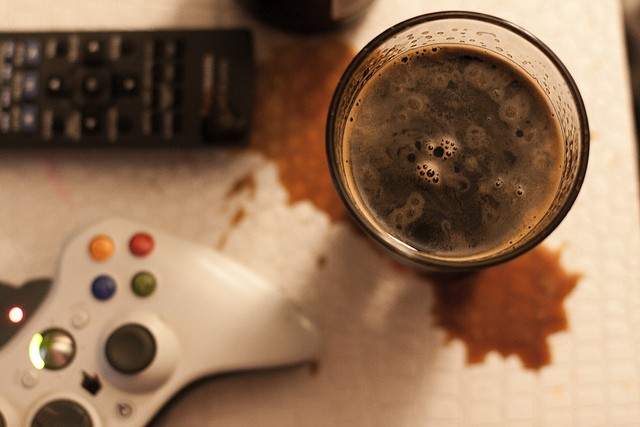
Not all craft beer is created equal. Sure, it's great to see so many new brew houses and bars opening up, but that also means you have to hone your standards. These are the things that will ruin your beer-drinking experience, so be smart and start raising your bars.
]
Taps Lines and Bottle Colors
There is a common misconception that a bar with an endless number of taps is a pretty cool place. Now, while selection might be pretty good, I'm going to tell you why too many taps is no bueno.
First off, beer expires. The keg is not an immortality chamber. If the beer isn't being drunk, it's going to go bad. What does “bad beer” taste like?
Well, if you get a buttery taste, that beer is old.
Take the average IPA. If a batch of IPA has passed its prime, that crisp, hoppy notes you expect will become overwhelmed by this funky, rancid buttery flavor you never want to taste. It's important to keep in mind, however, that some beers like stouts and porters can hang out a little longer and be just fine.
While spoiled swill should be the best — and enough of a — reason to avoid tap-happy bars, there's more. Tap happy venues also waste a lot of beer when it's time to clean. There is a line that needs to be cleaned every two weeks that runs from the tap to the keg. Typically, whoever is cleaning the lines will do so whenever the keg clears, because with regular business, it shouldn't take more than two weeks to finish a keg.
But, if you have countless beers to choose from, there will always be a beer (or several) the bartender hardly serves. So, not only will that lonely beer eventually expire but, when it comes time to clean the line, a lot of beer will get thrown out.
On that note, don't assume that draft will always be the best version of your beer. Stouts, porters and sours are often stored (properly) for months or years at a time and can get better with age.
Note: Make sure those bottles are opaque. Avoid any and all clear or green glass. The sun is a powerful beast, and its rays will skunk your beer.
If your beer comes in a can, always get the cans and keep in mind to check the canning or bottling date for whichever beer you choose to buy. You wouldn't buy old milk, so don't buy old beer.
[

Temperature and Carbonation
A few more characteristics of poor beer serving include inappropriate temperature and carbonation. Particular styles of beer require particular temperature and carbonation levels. We all expect our beer nice and cold (30-45 F), but you'll get more flavor from stouts, porters and barley wines when they're slightly warmer (45-60 F).
If you don't like your beer to be too bubbly, there is a easy solution: let it sit. Problem solved. Now, if your beer comes to you weakly carbonated, there's a problem. A good gauge to keep in mind is that if your beer is supposed to be a bit warmer (stouts, porters, barley wines, etc.), then it should have less carbonation than, say, an IPA. However, if your beer is straight up flat, it's a mistake on the brewer's part. Unfortunately, the only way to snake out of this jam is to simply get a different beer.
Pro Tip: All of the problems you just read about can all be avoided if you just ask for tasters.
Proper Cleaning and the Proper Pour
No one wants to drink out of a poorly cleaned glass. The head of your beer should retain its frothiness if you drink your beer at an average pace. However, if the glass has not been cleaned properly, the foam will disappear before you get a chance to Instagram it.
Your foam should lace the glass throughout your entire drinking experience. When your bartender cleans your glass by using those pint glass rinsers, you have nothing to worry about. Most places have them, but if they don't, you'll notice your foam won't lace because it'll disappear too quickly.
Keeping with the weak head retention theme, a bad pour will ruin your beer. The brewers worked hard to get that science-project-in-a glass just right and nothing is more upsetting than when a bartender serves you a headless beer due to improper pouring (I know, I know, you want more beer, but head is important too.). Pouring is easy: just angle the glass at 45 degrees and go.
If you manage to avoid all these pit falls, well, stop reading and get drinking.

